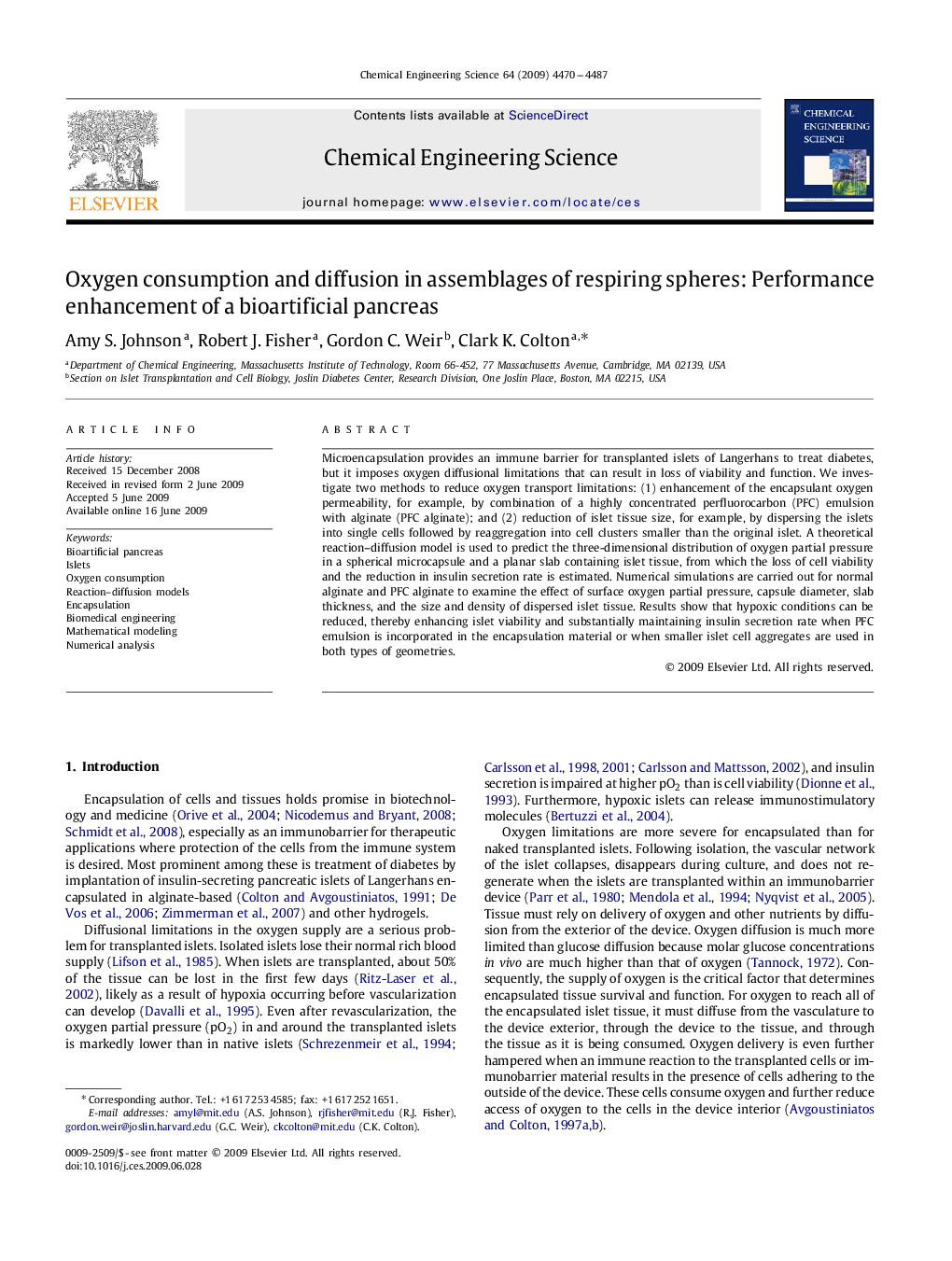| Article ID | Journal | Published Year | Pages | File Type |
|---|---|---|---|---|
| 157322 | Chemical Engineering Science | 2009 | 18 Pages |
Microencapsulation provides an immune barrier for transplanted islets of Langerhans to treat diabetes, but it imposes oxygen diffusional limitations that can result in loss of viability and function. We investigate two methods to reduce oxygen transport limitations: (1) enhancement of the encapsulant oxygen permeability, for example, by combination of a highly concentrated perfluorocarbon (PFC) emulsion with alginate (PFC alginate); and (2) reduction of islet tissue size, for example, by dispersing the islets into single cells followed by reaggregation into cell clusters smaller than the original islet. A theoretical reaction–diffusion model is used to predict the three-dimensional distribution of oxygen partial pressure in a spherical microcapsule and a planar slab containing islet tissue, from which the loss of cell viability and the reduction in insulin secretion rate is estimated. Numerical simulations are carried out for normal alginate and PFC alginate to examine the effect of surface oxygen partial pressure, capsule diameter, slab thickness, and the size and density of dispersed islet tissue. Results show that hypoxic conditions can be reduced, thereby enhancing islet viability and substantially maintaining insulin secretion rate when PFC emulsion is incorporated in the encapsulation material or when smaller islet cell aggregates are used in both types of geometries.
